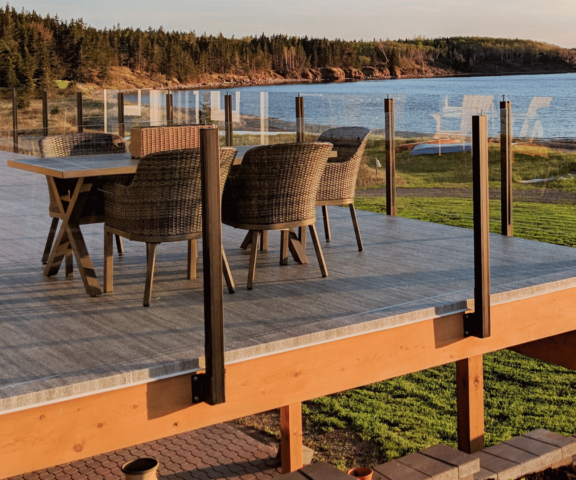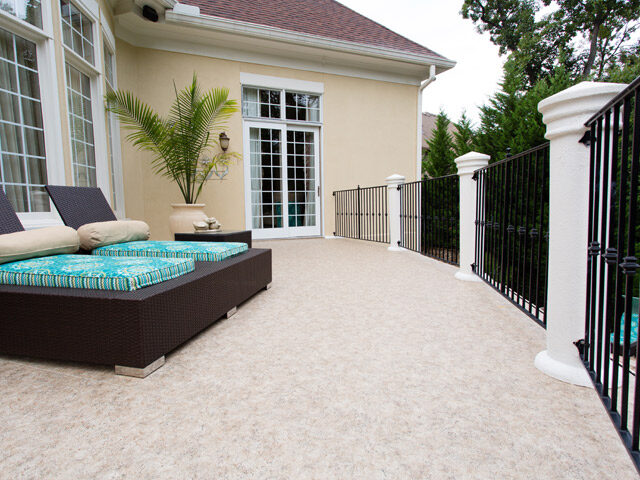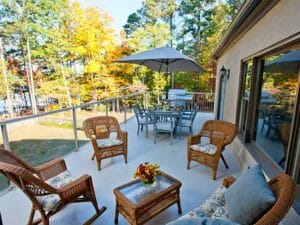USA: 1-800-338-3568 | CANADA: 1-866-591-5594
Code Development Information for Deck Builders
Code Development for Decking in the 2015 IRC
Potential changes in building codes may change the way deck builders are required to construct decks, and certainly, something decking professionals should stay informed on. While many jurisdictions have yet to adopt the 2012 edition of the International Residential Code, development of the 2015 IRC is already underway.
The decking industry was represented by building inspector and NADRA advisor Glenn Mathewson at the committee hearings that took place in Dallas in April where nearly two dozen proposed changes that would affect the decking industry were presented.
You can see details on the proposed changes at the NADRA website or read an interesting summary with Mr. Mathewson’s analysis on each proposed item in his article 2015 Deck Code Update on Professional Deck Builder.
Here is a quick summary of Mr. Mathewson’s overview of the status of the proposals affecting deck building for the 2015 IRC:
Comprehensive Proposals
- RB264 and RB268 – include joist and beam span tables for wet-use environments, post sizing, framing connection and footing provisions.
Status: Disapproved (however, the committee encouraged stakeholders to modify for the final hearings)
Guards
Deflection Limits
- RB61-13 – limits guard-post deflection to about 3 inches and limits downward deflection of top rails to about 1 inch over 8 feet while under a maximum required design load of 200 pounds.
Status: Disapproved
Height Above Seating
- RB145-13 – would change current requirement to measure guards from fixed bench seating at bench level to deck level with built-in deck seating.
Status: Approved (an encouraging indication of common sense in the committee in realizing children can climb moveable deck furniture and allows built-in deck seating to return from virtual extinction!)
Deck Height Measurement
- RB143-13 – would change height measurement from current 36 inch horizontal distance from edge of deck back to exact edge of deck in determining whether or not guards are required.
Status: Disapproved (committee agreed that people fall away from an open platform, not straight down….more common sense – go committee!)
Lateral Loads
- RB260-13 – would require that the two hold-down tension devices permitted by the IRC be installed within 24 inches of each end of the deck ledger.
Status: Approved
- RB261-13 – provides exception to the hold-down device provision for decks less than 30 inches above grade.
Status: Disapproved
- RB262-13 – provides for a second lateral load connection method.
Status: Approved
- RB263-13 – provides exception for decks not requiring guards.
Status: Approved
Other Structural Requirements
Blocking Over Beams
- RB247-13 – would eliminate the requirement for blocking over a beam when joists cantilever 24 inches or less.
Status: Approved with modifications
Hangers on Beams and Ledgers
- RB253-13 – would restrict design flexibility by such common practices as hanging 2×6 joists from the bottom portion of a 2×12 beam or ledger, with little evidence that minimal loads from conventionally sized lumber joists could split a supporting member.
Status: Disapproved
Setbacks
- RB66-13 – would provide an exception to fire-resistive construction for decks that are more than 5 feet from the property line or dwelling.
Status: Disapproved
- RB74-13 – would require exterior stairways to be at least 5 feet from lot lines and other building on the lot.
Status: Disapproved
- RB75-13 – would require accessory structures such as patio covers and decks, whether attached or detached, to be at least 5 feet from lot lines.
Status: Disapproved
Other Proposals
- RB102-13 – would eliminate all requirements for illumination of exterior stairways.
Status: Disapproved
- RB129-13 – clarifies that stairways serving decks, porches, balconies and sunrooms are regulated the same as any other stairway.
Status: Disapproved
- RB130-13 – would allow handrails to project up to 6 ½ inches into stairs as opposed to current maximum of 4 ½ inches.
Status: Disapproved
- RB141-13 – would allow all ramps other than ones serving a required egress door to be a maximum slope of 1-in8 vs. current maximum of 1-in-12.
Status: Approved
- RB142-13 – would require that the minimum width of landings for ramps be equal to the width of the ramp vs. the current 36 inches.
Status: Approved
- RB187-13 – would require exterior stairways and ramps built in flood-hazard areas to be constructed in one of three specifically prescribed ways.
Status: Disapproved
- RB115-13 – clarifies when safety glazing is required for windows or doors located underneath or at the bottom of a stairway.
Status: Approved
- RB42-13 – included exception for decks, sunrooms and similar spaces to the requirement for protection of glazed openings in regions prone to wind-borne debris, provided some specifics regarding the wall of the home are satisfied.
Status: Disapproved
- RB8-13 – would require contractors disturbing interior or exterior surfaces on homes built prior to 1978 to submit EPA certificates and a plan complying with 40 CFR745 to building officials for work on homes, even when building a deck.
Status: Disapproved
- RB15-13 – restores previous definition of “balcony” and “decks” in the IRC.
Status: Disapproved
- RB31-13 – adds a definition for ‘spiral stairway’ in the IRC that allows more freedom than the IBC definition does by omitting the center column from the description.
Status: Approved
- RB58-13 – removes references to “guardrail” and replaces them with the IRC-defined term “guard”.
Status: Approved
- RB60-13 – included “deck floors” in the floor description for allowable deflection.
Status: Disapproved
- RB465-13 – requires that all swimming pools, spas, and hot tubs comply with the International Swimming Pool and Spa Code (this code has deck provisions not currently required by the IRC).
Status: Approved
Next Steps in 2015 IRC Code Development
While many of these current results demonstrate a realistic common sense approach and an adequate understanding of the practicalities of deck building practice, any of these results can be overturned at the final hearing. Glen Mathewson will continue to represent the decking industry at the final hearings which are scheduled for October 2013.
With so much effort to ensure decks are built properly and safely, be sure to use professional waterproofing to be confident it is protected. For information on our vinyl deck waterproofing membrane, contact a trained and authorized Duradek dealer in your area.



